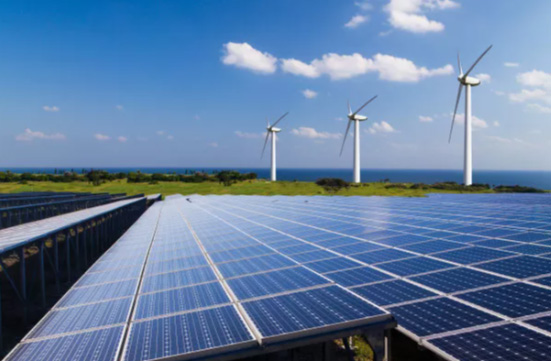Photovoltaic power station refers to a photovoltaic power generation system that uses solar energy, uses special materials such as crystalline silicon plates, inverters and other electronic components, and is connected to the power grid and transmits electricity to the power grid. Photovoltaic power station in the role of the inverter, an unattended can fully automatic operation of the photovoltaic inverter how intelligent? Today we're going to sort it out.

- Intelligent MPPT. MPPT technology is the core and key technology of inverter. It refers to the ability of power inverter to track and find the maximum output power of components in real time. The output power of photovoltaic modules is affected by radiation, temperature and other factors, so it can not always output the nominal rated power. The task of the inverter is to track the maximum power output of the modules at every moment in real time, so as to maximize the power generation.
- Intelligent anti-isolated island. Island prevention and low voltage crossing are contradictory in nature, but in some unattended power stations or large ground power stations, it is necessary and reasonable to exist at the same time. The relevant provisions of the national standard stipulate the time of anti-island protection and low voltage crossing. When the power grid fails, the island is about to be generated. At this time, the photovoltaic system only needs to support for about 1s to wait for the power grid to recover. In this process, the inverter always keeps the detection state of the power grid information.
- Intelligent cluster monitoring. With the development of technology, inverter on the basis of the original MPPT monitoring, has already realized intelligent group series by series monitoring. Compared with MPPT monitoring, the monitoring of voltage and current is accurate to each branch group string, and users can clearly view the real-time operating data of each group string. If the voltage of the group string is inconsistent, it can be reverse proved that the number of components of the group string is inconsistent at a glance.
- Intelligent I-V curve scan diagnosis. The PV module I/V curve refers to the corresponding relationship between the output current and output voltage of the PV module, which is expressed by the researchers in the form of a curve. The I/V curves of the component and string will change significantly once the component is shaded, damaged, or in poor contact.
- Intelligent anti-PID effect. PID (Potential induced degradation) effect of photovoltaic module refers to the performance of the module will gradually decay after a long time of work. The direct harm of PID effect is that a large number of charges gather on the surface of the battery, so that the surface of the battery passivation phenomenon, so that the filling factor of the battery module, open circuit voltage, short circuit current is reduced. Reduce the output power of solar power stations, reduce the generation, reduce the income of photovoltaic power stations.
- Intelligent air cooling. At present, intelligent air cooling is widely used in the sine wave inverter, and the inverter external high-performance fan, protection level up to IP67, built-in temperature sensor and drive circuit real-time monitoring device temperature, and set the appropriate threshold. When the temperature exceeds the threshold, the circuit automatically drives the fan. When the temperature returns to normal, the circuit shuts down and the fan stops running gradually.
- Connect the network intelligently. The reason why the inverter can realize automatic operation is because it has the function of intelligent recovery and grid connection. The normal operation of the power station depends on a variety of factors, such as string voltage, grid voltage, frequency, etc, and the inverter may appear standby, fault shutdown and other states due to the absence of grid-connected output conditions. Once it detects that the operating conditions are normal, it will automatically restore the grid output after self-check, and no longer need to re-debug, restart and other artificial operations.
- Intelligent reactive power compensation. Generally, photovoltaic inverters only generate active power. However, in practical application scenarios, especially in industrial and commercial photovoltaic self-use scenarios, the power consumed by loads includes not only active power but also reactive power. The power grid company only charges active power when the electricity bill is settled, but also evaluates the power factor, if the power factor is lower than the requirements of the power grid company. The grid company will charge punitive rates. In order to avoid the generation of power regulation, industrial and commercial owners usually used reactive power compensation devices at the load end to ensure that the power factor reached the standard.
